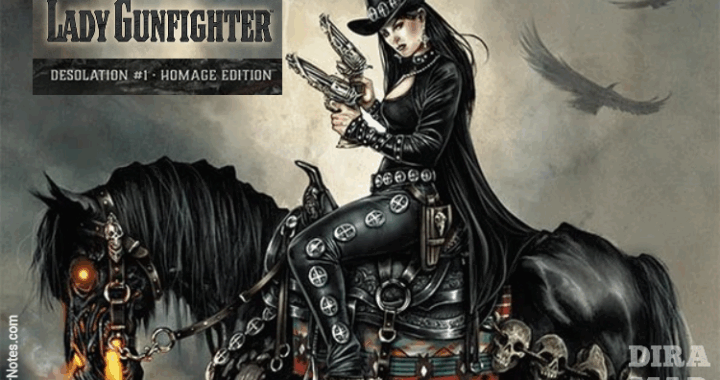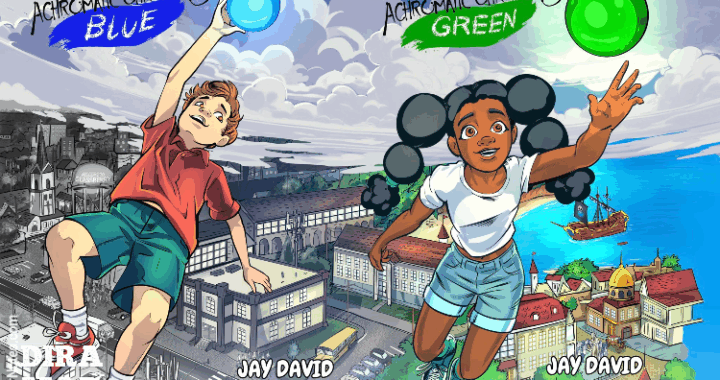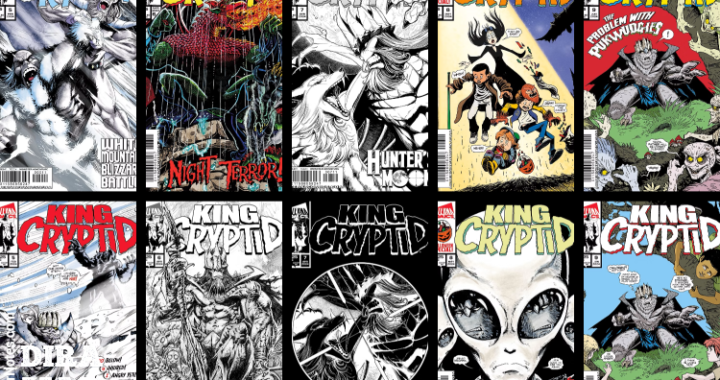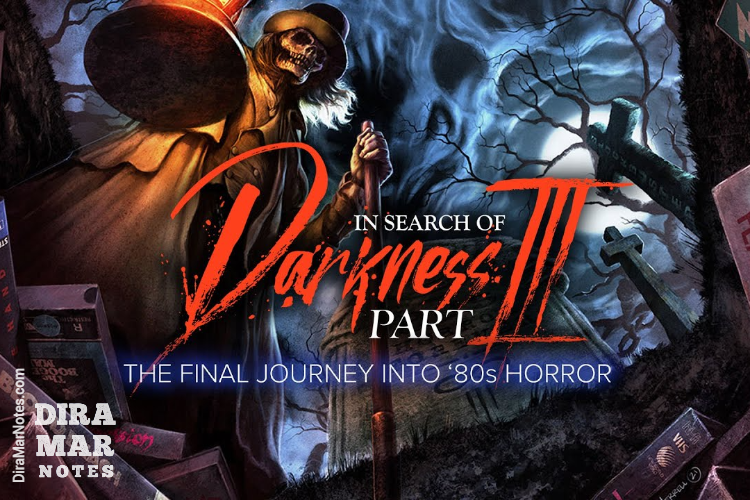
IN SEARCH OF DARKNESS PART 3: THE FINAL JOURNEY INTO ‘80S HORROR
The exploration of “In Search of Darkness Part 2” took us on a journey delving deep into the rich history and enduring appeal of horror films. “In Search of Darkness Part 3” is the culmination of this journey.
“In Search of Darkness Part 3: The Final Journey into ‘80s Horror,” brings the exploration of horror cinema into the 21st century and beyond. As technology advances and societal fears evolve, filmmakers continue to push the boundaries of the genre, exploring new themes and storytelling techniques.
THE FINAL JOURNEY INTO ‘80S HORROR
“In Search of Darkness Part 3” is a five-plus-hour deep-dive exploration of a time when horror filmmaking exploded globally, fueled by new distribution outlets on cable TV, multiplex theater chains, and the power of the VHS revolution in the ‘80s.
Packed with hundreds of quality film clips and more than 70 interviews with horror icons and experts who share insider tales of filmmaking adventures and the horror movies they love. This long-form documentary dives into 79 impactful and controversial films of the decade, from direct-to-video/shot-on-video bottom-shelf favorites to unsung drive-in and theatrical releases.
Presented in a year-by-year format alongside larger-context chapters, this documentary explores the rise of indie horror filmmakers and distributors amid the home video boom; the horror backlash during the Satanic Panic; heavy metal in horror; marginalization in mainstream content; the influence of Mexican, European, Canadian and Asian horror films; the flexibility of the horror genre, visionary directors, artists on artists profiles, and much more.
“In Search of Darkness Part 3” is the ultimate wild ride and a nostalgic love letter to one of the greatest eras of cinema, capping the “In Search of Darkness” trilogy with a bang.
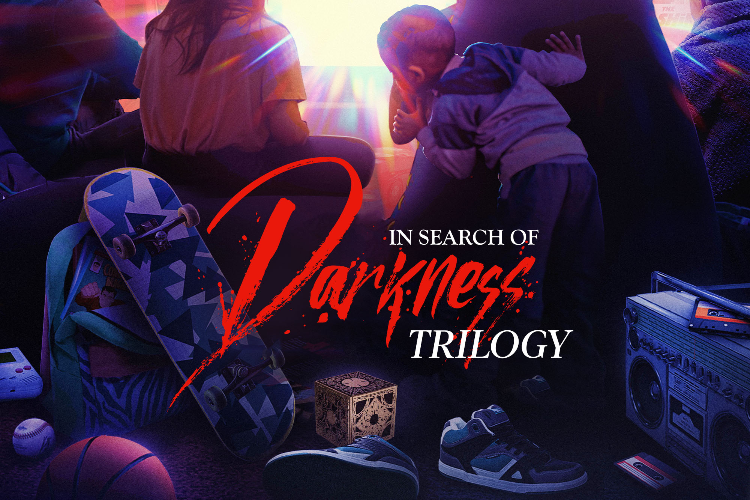
THE MODERN ERA AND BEYOND
“In Search of Darkness: Part 3: The Final Journey into ‘80s Horror,” examines the impact of globalization and digital media on the production and distribution of horror films, as well as the rise of independent filmmakers and the VHS explosion where horror films started doing very well. The emergence of home video brought the price of making movies down.
You didn’t need a big studio to make your film, you could make your film and put it directly on video like the Elvira’s Movie Macabre series. It’s similar to the streaming explosion with the combination of high-quality smartphone video recording. Moreover, it delves into contemporary trends such as found footage, supernatural horror, and social commentary on the satanic panic, showcasing how the genre remains relevant in an ever-changing world.
By featuring interviews with a diverse array of voices from within the industry, “In Search of Darkness: Part 3” provides a comprehensive overview of the current state of horror cinema and offers valuable insights into its future direction.
Through interviews with directors, actors, and special effects artists, viewers gain valuable insights into the creative processes behind these seminal works and their enduring legacy in popular culture. There are special sections where actors and special effects artists such as Adrienne Barbeau, Dee Wallace, and Screaming Mad George, expand a little more on their craft and their experience working on the films in the 1980s.
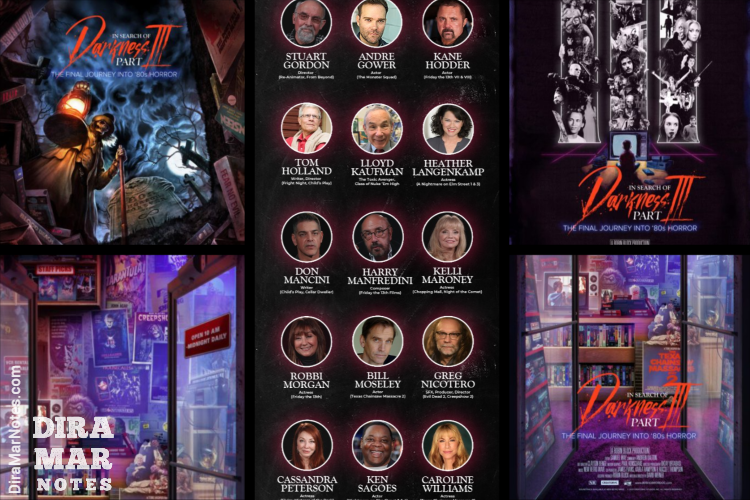
FIRST IMPRESSIONS
From found footage to psychological horror, “In Search of Darkness: Part 3” showcases the diversity and innovation of contemporary horror, while also reflecting on its enduring relevance in an ever-changing world. Horror exploitation was well done by filmmakers in the 80s, most films were over the top, gory and all rated R or X.
CRITICS = INFLUENCERS
Unlike then when people liked these low-budget movies, now low-budget movies are compared to big-budget movies and torn apart by influencers and movie viewers they influence. A similar behavior to the 80s critics. Back then American viewers were forgiving because they knew they were watching low-budget movies.
Many influencers and movie viewers have been jaded by the constant bad revamping and revivals of their favorite movies. It’s very difficult to find people who can express that they simply enjoy the movies. Whether it’s a horror film, a popcorn film, a thriller, or whatever, there are always complaints and complaints on social media. And those few who courageously say they liked the film are berated for finding enjoyment.
Very few of those who constantly complain will look into foreign content and give it the same attention as they give to the content they know they will not enjoy. Despite everything that is said about the theater-watching experience the regular movie viewer still goes to the movies and does support independent movies and is open to give foreign films a chance like Godzilla -1.
Mainly because they want a distraction from the daily issues, especially after the pandemic people wanted escapism. 80s movies are still popular as people are discovering them on streaming platforms. As seen in this documentary series some films are difficult to find.
Either because the independent filmmakers have not licensed their films, or the quality to make a digital transition is not there. There is also a rising interest in physical media seeing how scenes are removed, dialogues are adapted from the original version, and most importantly how difficult it is to enjoy content on streaming with low bandwidth internet.
THE SATANIC PANIC
It’s funny to see how people cared so much about satanic worship back then, and how today people simply don’t care. Hollywood successfully manages to reduce any traditional religious based or inspire stories that contrast their selfish religion.
You are having people that pretend to be good but their social media history exposes their behavior. They pretend to have a moral high ground but when confronted with real-life situations their behavior is as bad as the one they criticize. They would be against a morally wrong act unless it’s against a morally wrong act against people they see as their enemy, the other. Then those acts are justified forgetting that karma exists, and everyone will at some point in time face the consequences of their actions.

INFLUENCING THE INFLUENCERS
Hollywood has been shaping an idea of what reality is and its influence is significant. Social engineering by shaping culture to their image in Film, TV, Radio, Videogames, and Podcasts.
It has become part of the culture with people using signs they don’t know the significance of just because their favorite celebrities and influencers used them. And it seems like there is a method to this madness according to content creator Dougie Corrado, who is an eyewitness to the recruitment of young and upcoming influencers in the hills of Los Angeles, U.S. which at this point seems to be an open secret.
The satanic panic may have been overboard back but it seems like there was any honest dialogue facilitated to discuss the origins. All seems to be in an exaggerated tone. It all facilitated the normalization of evil. Mocking religion is openly done now explicitly by musicians and it always goes back to the veneration of the devil.
Even though in Dougie’s story there was no distinction between the religions, the most openly mocked religion over the years has been Christianity. It’s not surprising that the artists who chose the religion they grew up with over the town’s religion are ousted from the spotlight.
AMERICAN POP CULTURE AND PARENTAL GUIDANCE
It’s fascinating to see what Americans chose as their symbols for anti-establishment and hope. From the outside looking in, one is left to wonder how much of those choices contributed to the current decayed status of American pop culture that creates content based on a victimhood mentality, a denial of history and facts a pervasive intent to expose children to adult content to normalize relationships with minors.
Thankfully parental monitoring apps have evolved and it has become a little bit easier for parents to monitor the internet use of minors. Which is very different from the 80s when children were exposed to violence, gore, and nudity.
DIVERSITY
Like with everything that seems too good to be true, unfortunately in this series we will find snippets of the negative equation to Diversity, Equity & Inclusion (DEI) where the artist will blame the system for their experiences. I say snippets because there are artists that will defend their legacy.
Particularly the women who were action starts with all the running and fighting monsters. They embrace their work and appreciate the opportunity they have to do action scenes while being feminine. They didn’t want to look like men. Representation was also a thing, where people felt represented unless something bad happened to the character or they were not the hero of the story. Some stereotypes exist for a reason. They originate from some kind of unique behavior or perception.
America has created a weird employment system based on ethnicity, religion (or lack thereof), and sexual orientation rather than it being based on merit. The new talents are easily manipulated by management and executives because they lack experience.
There are talented artists from minority groups who become independent because they are more critical and opinionated about their art. It’s why Hollywood had difficulty making good Latino stories. Unfortunately, this weird employment system is spreading through the world through the foreign-based branches of American-based companies.
REPRESENTATION
Regarding representation, I don’t get it. I don’t need representation to connect to the characters. I identify with how they are as human beings. And when I don’t connect with the female character that is supposed to represent me, I’m the problem. The Americans ‘obsession with race is difficult to comprehend.
Imagine if you have immigrants from 50 countries living in your country. Is it feasible to expect representation for each one of them in every industry? Maybe it’s possible with no meritocracy but it will also mean a lower quality in products and services because you are not looking for the best but for a token to say you support representation.
PHYSICAL MEDIA
The printed Blu-Ray disc of Part 3 has a similar structure to Part 2 with a special feature including a discussion with the creators of In Search of Darkness.
The documentary concludes with the credits, listing the names of all the backers who supported the crowdfunding campaign for “In Search of Darkness Part 3.” Additionally, video commentary from project supporters is shown alongside the credits.
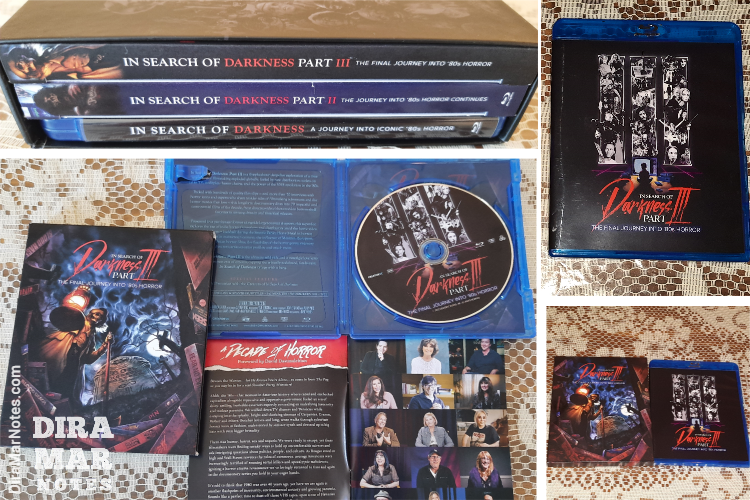
FINAL THOUGHTS
“In Search of Darkness Part 3: The Final Journey into ‘80s Horror,” is a nice culmination of this documentary series created and produced by CreatorVC.
Whether you’re a longtime fan or a newcomer to the genre, “In Search of Darkness” trilogy provides a captivating journey through the dark and twisted world of 1980s horror films that left a lasting impression on audiences worldwide.
The series is not perfect, often the interviewees will bring up current-day politics which took me out of it a little like with “In Search of Tomorrow” but overall, it’s still an educational series about ‘80s horror.
CreatorVC will start the exploration of the next decade with “In Search of Darkness 1990-1994”. In the early ‘90s, there was an abundance of creative visions, vibrant approaches, and insane, memorable entries that were still riding the wave of the ‘80s horror gold rush. Be on the lookout for ’90s horror.
Interested in more titles? Check them FILMS &TV under the “EYES ON” series wherein I document my crowdfunding entertainment experience and share my notes on the products I received.

